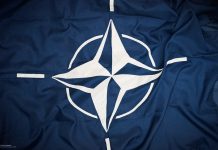
Lockheed Martin, a cornerstone in American defense, has officially greenlit Poland’s integration into the supply chain for two advanced weapon systems: the PAC-3 interceptor launch vehicle, a vital component of the Patriot air defense system, and Lockheed’s F-16 Fighting Falcon jet, a formidable fourth-generation aircraft. The declaration was disseminated through the company’s official channels.
This initiative, codenamed ‘WISLA’, is orchestrated with Lockheed Martin at the helm, aiming to empower local professionals, experts, and engineers in bolstering specific elements of the aforementioned dual system. Notably, Lockheed Martin has announced the successful completion of the initial phases of these offset projects.
WZE, a Polish enterprise, has been granted formal authorization for three ventures, including the development of the Advanced Electronic System [EAS], the establishment of the Junction Box [J-box], and the design of the Engine Control Unit [MCU] of the PAC-3.
Regarding the PAC-3 supply chain, WZE has exhibited remarkable precision in establishing production lines for the assembly of the EAS and J-Box programs. The EAS serves as a critical power supply source and signal mechanism for the PAC-3 artillery, while the J-Box facilitates power and signal distribution to the launcher. Lockheed Martin is poised to enable WZE to compete for future productions of EAS and J-Box for the PAC-3 MSE launch vehicles destined for Poland.
Delving into the intricacies of the MCU project, it primarily involves the development of an electric power switch integrated within the MCU itself. WZE has made significant strides, accomplishing four out of the seven scheduled WISLA phase 1 offset projects.
In the realm of the F-16 supply chain, WZL-2, another Polish pioneer, has successfully completed two projects related to F-16 aircraft maintenance. The F-16 Electrical Maintenance and F-16 Electrical Hydraulics Projects are geared towards transferring technical expertise, providing essential equipment and tools, crafting relevant documentation, and extending technical assistance to enable WZL-2 to efficiently maintain three F-16 generators and two hydraulic F-16 components. With this milestone, WZL-2 has fulfilled all three WISLA Phase 1 tasks.
In August of last year, Poland signaled a strong interest in joining the supply chain of certain weapon systems produced by industry leader Lockheed Martin. Responding to this interest, the American company announced the successful completion of the initial prototype of the F-16 rear fuselage. This achievement reflects a collaborative effort between the Polish and American entities involved.
“Our dedication to uplifting Poland’s defense industry and economy through employment opportunities, knowledge exchange, and exports is mirrored in this venture,” reads an official statement by Lockheed on X.
It’s imperative to recognize that while Poland stands as the latest addition to the European nations involved in Lockheed Martin’s weapons systems supply chain, it is not the sole participant. This proactive engagement by the American manufacturer signifies both their and the US government’s commitment not only to bolstering Patriot and F-16 sales in Europe but also to streamlining production processes, thus expediting delivery schedules.
Lockheed Martin’s collaboration with Poland encompasses three key objectives. Firstly, it aims to transfer valuable technological expertise to Poland, enhancing the capabilities of the local defense industry. Secondly, it seeks to stimulate economic growth by generating job opportunities. Lastly, and significantly, it aims to fortify Poland’s defense capabilities in response to evolving threats.
In recent years, Poland has made substantial investments in modernizing its defense sector. Alongside the acquisition of American-made F-16 fighters, Washington has greenlit the sale of F-35 aircraft to Poland’s sizable Air Force. Furthermore, by adopting the Patriot anti-aircraft system, Poland is phasing out outdated Cold War-era equipment.
Poland’s defense procurement strategy extends beyond reliance solely on the US. The nation has forged partnerships with other countries, notably South Korea, its second-largest defense partner. Poland’s decision to procure thousands of tanks, self-propelled howitzers, and light combat aircraft underscores its commitment to fostering local collaboration between governmental authorities and industries. It’s anticipated that products manufactured in South Korea will find their way into Poland, further enhancing defense capabilities.




